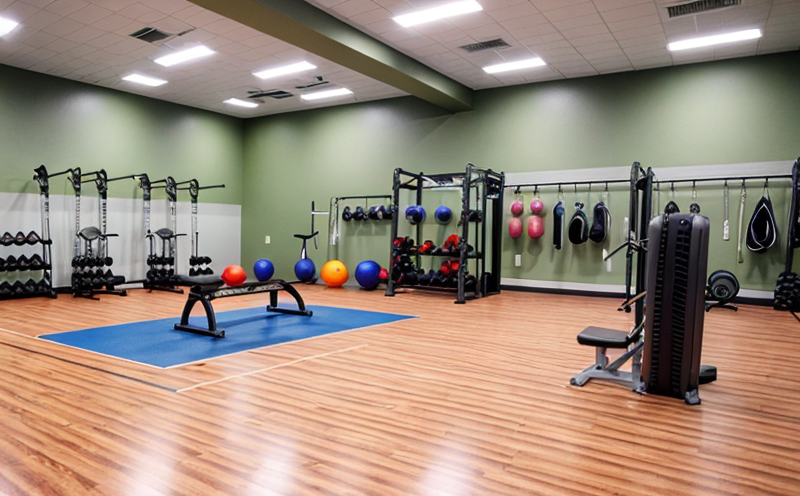Motor Performance Testing in Treadmills
Motor performance testing is a critical component of product safety and quality assurance when it comes to designing and manufacturing treadmills. The motor is the heart of any treadmill, providing power that ensures smooth operation and consistent speed control. This test evaluates the motor's torque output, efficiency, durability, and overall performance under various operational conditions.
The testing process involves simulating real-world use scenarios to ensure that the motor can withstand the stresses it will encounter during regular usage without failing prematurely. Key parameters include peak power, sustained speed capability, energy consumption, and heat generation. These metrics are crucial for maintaining user safety and ensuring compliance with international standards.
The testing setup typically includes a treadmill equipped with sensors to monitor various performance indicators. The motor is subjected to different load conditions that simulate the weight of users ranging from light to heavy individuals. The test also evaluates how well the motor can handle sudden changes in speed, such as quick starts and stops, which are common during exercise routines.
During testing, engineers closely observe torque levels, temperature rise, and noise generation. These factors are vital in assessing the motor's efficiency and identifying potential weak points. By conducting rigorous motor performance tests, manufacturers can identify areas for improvement and enhance product reliability. This not only protects consumers but also contributes to brand reputation by demonstrating a commitment to quality.
Motor performance testing is essential because it ensures that treadmills meet the highest safety standards set by international organizations like ISO, ASTM, and EN. Compliance with these standards guarantees that products are safe for public use, which is particularly important in consumer electronics and fitness equipment.
In addition to basic performance metrics, advanced tests can also assess motor longevity under extreme conditions, such as high humidity or temperature variations. These extended tests help manufacturers understand how their products will perform in diverse environmental settings, thereby increasing product lifespan and reliability.
For quality managers and compliance officers, this test is invaluable for ensuring that new models meet regulatory requirements. For R&D engineers, it provides valuable data to refine designs and improve future iterations of the product. Procurement teams can also benefit by using these test results to select suppliers who produce motors with consistent performance standards.
Why It Matters
The importance of motor performance testing in treadmills cannot be overstated. Ensuring that the motor operates efficiently and safely is paramount for both consumer safety and product reliability. When a treadmill's motor fails, it can lead to accidents or injuries, especially during intense exercise sessions.
- Consumer Safety: A malfunctioning motor could cause sudden stops or uneven speed changes, posing risks to users.
- Product Reliability: Reliable motors enhance the overall durability of the treadmill, leading to longer product lifespans and customer satisfaction.
- Regulatory Compliance: Meeting international standards ensures that products are safe for global markets and avoids potential legal issues.
The motor is a key component in maintaining user trust. When users know their treadmills undergo thorough testing, they feel more confident about the product's quality and safety. This confidence translates into better brand loyalty and positive market feedback.
Applied Standards
Motor performance testing in treadmills adheres to several international standards that ensure both safety and efficiency. These include ISO 8061:2017 for treadmill specifications, ASTM F3095-18 for consumer exercise products, and EN 957-3:2015 for fitness equipment.
ISO 8061 provides detailed requirements for the design, construction, and testing of treadmills. It covers aspects such as speed range, incline capability, and braking systems. ASTM F3095 focuses on consumer exercise products, emphasizing durability and safety features. EN 957-3 sets out specific criteria for fitness equipment, including performance standards that must be met.
These standards are crucial because they provide a benchmark against which manufacturers can evaluate their products. Compliance with these standards not only ensures product quality but also facilitates easier market entry and international trade. By adhering to these guidelines, treadmill manufacturers demonstrate their commitment to providing safe and reliable exercise equipment.





